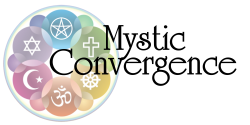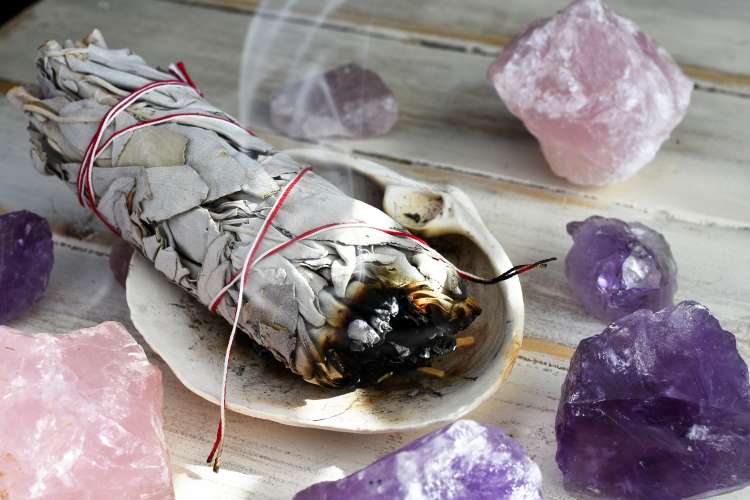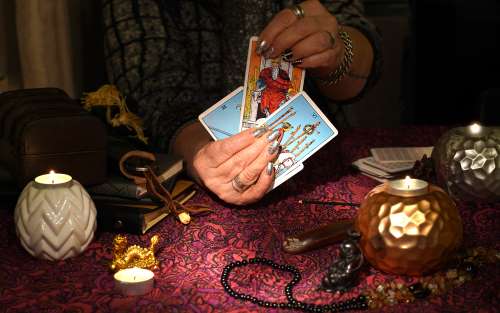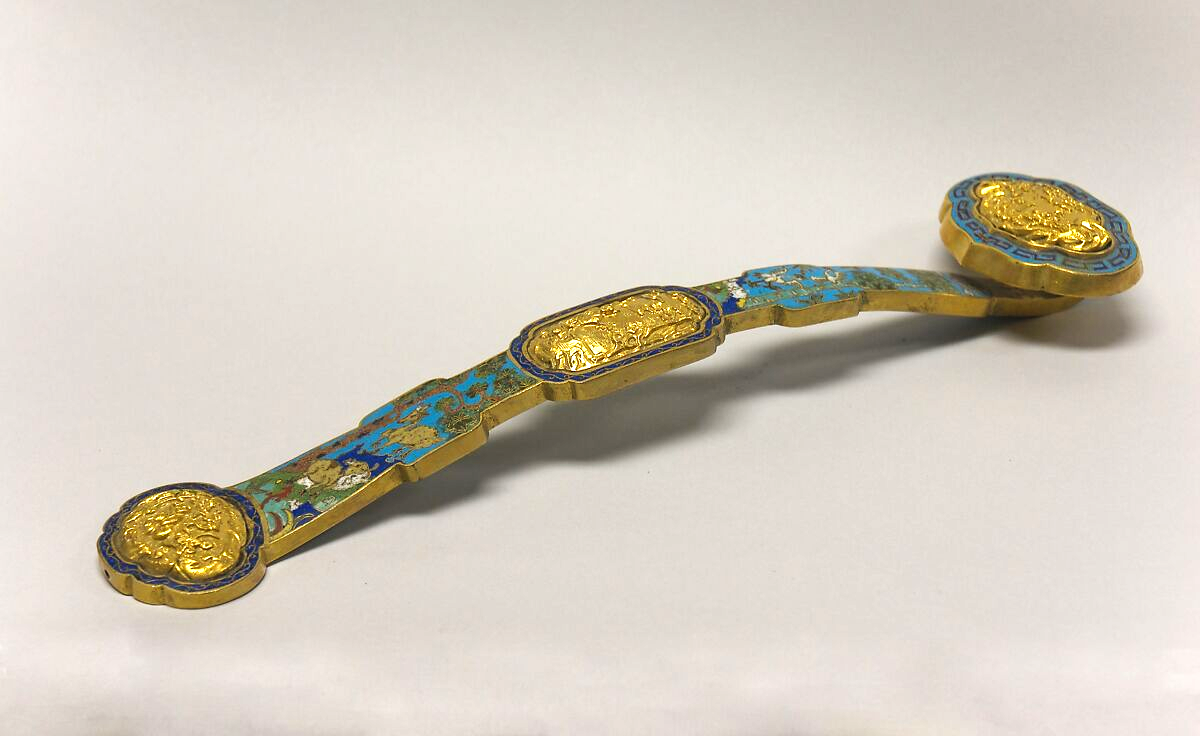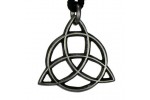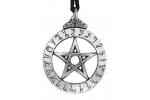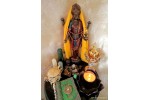Magic Wands: Making Magic Throughout History
- Lori Anne Brown
- |
- Posted on: 2023-11-10
- |
- Views: 3252
- |
- Category:
- ▸ Magical Basics
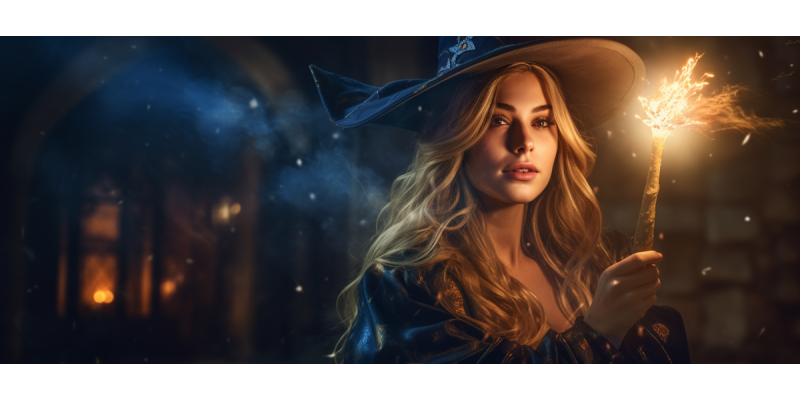
- Historic Origins - Magic wands in different cultures and historical periods
- Design and Composition of Magic Wands - Materials, symbols and crystals
- Contemporary Usage - The influence of pop culture from Harry Potter and beyond
- Rituals and Practice - How wands are used in modern rituals
- Enduring Enchantment - The importance of wands today
- FAQs - Frequently Asked Questions
Magic wands have long captivated the human imagination, weaving a spell of mystique and wonder through the tapestry of time and culture. These enigmatic tools, often perceived as mere fantasy, hold a profound place in the annals of mystical traditions worldwide. From the ancient staffs of Egyptian pharaohs to the ceremonial rods in modern Western occultism, magic wands transcend mere folklore to become potent symbols of power and transformation.
In this exploration, we'll embark on a captivating journey to uncover the varied roles and spiritual significance of magic wands. Our path will crisscross through different epochs and continents, revealing how these magical instruments have shaped rituals, practices, and beliefs throughout history. Beyond their portrayal in popular culture, magic wands are steeped in a rich tapestry of tradition, craftsmanship, and esoteric knowledge.
As we delve deeper into the mystical world of magic wands, allow yourself to be transported to a realm where magic and reality blend seamlessly. This article is not just an exploration of history; it is an invitation to discover the enduring legacy of magic wands in human culture. Prepare to be enchanted as you unravel the mystical threads that bind these wands across cultures, offering a unique window into their enduring allure and mystical significance.
Historical Origins and Evolution
The story of the magic wand begins in the annals of ancient history, where they first emerged not as tools of fantasy, but as symbols of authority and divine connection. Tracing their origins takes you back to the earliest civilizations, where priests, shamans, and rulers wielded staffs and rods as embodiments of their power and spiritual acumen.
Earliest References
In ancient Mesopotamia and Egypt, wands and staffs were more than mere objects; they were powerful symbols. Egyptian hieroglyphs and Mesopotamian carvings depict rulers and deities holding staff-like objects, signifying their control over both the natural and supernatural realms. These artifacts were not just ceremonial; they were believed to be imbued with the power to command spirits, influence natural forces, and protect against malevolent energies.
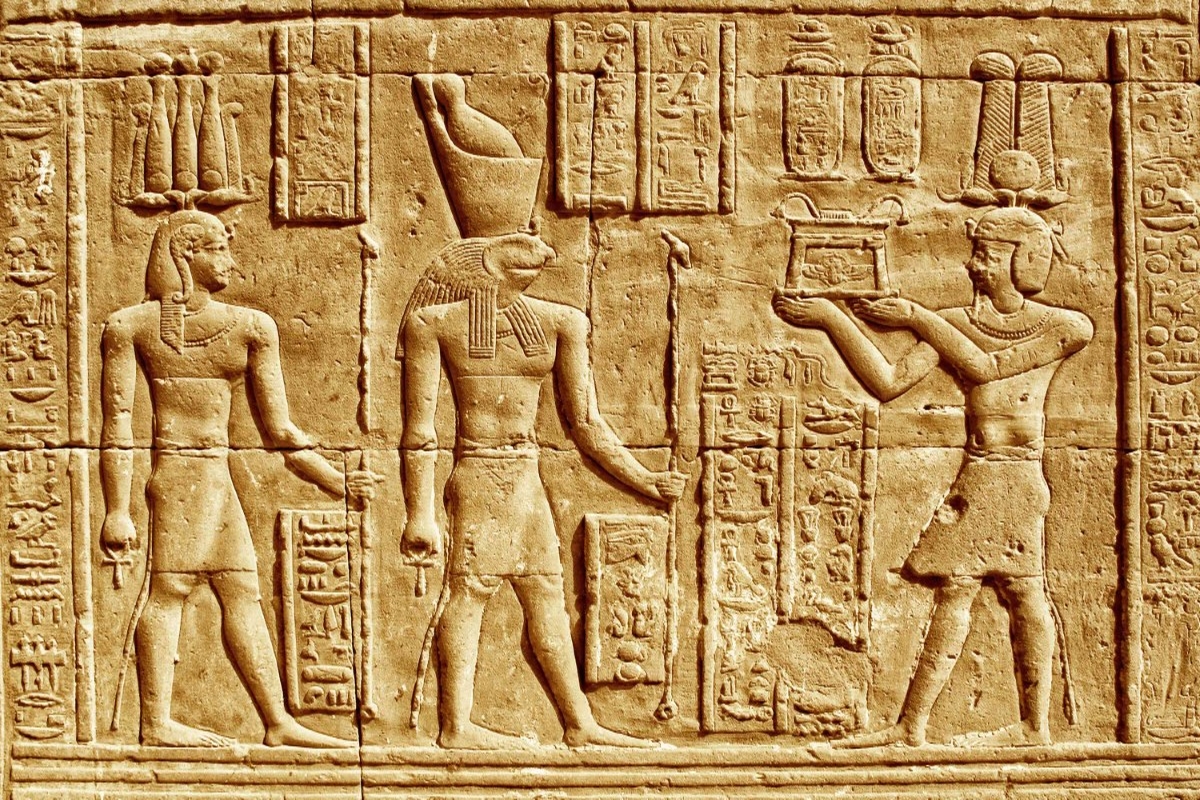
Evolution Through Antiquity
As civilizations evolved, so did the concept of the magic wand. In Ancient Greece and Rome, wands began to take on more defined roles in myth and ritual. The Greek god Hermes wielded his Caduceus, a staff entwined with serpents, symbolizing commerce and negotiation. Similarly, the Roman god Mercury, often depicted with a wand, was believed to possess the ability to guide souls to the afterlife.
Medieval and Renaissance Magic
The Middle Ages and the Renaissance saw the magic wand evolving further, becoming an essential tool in the hands of magicians and alchemists. During this period, wands were often crafted to align with astrological events and imbued with various substances believed to enhance their power. The writings of medieval grimoires and magical texts frequently mention wands, highlighting their role in ritual magic and divination.
Wands in Folk Magic and Witchcraft
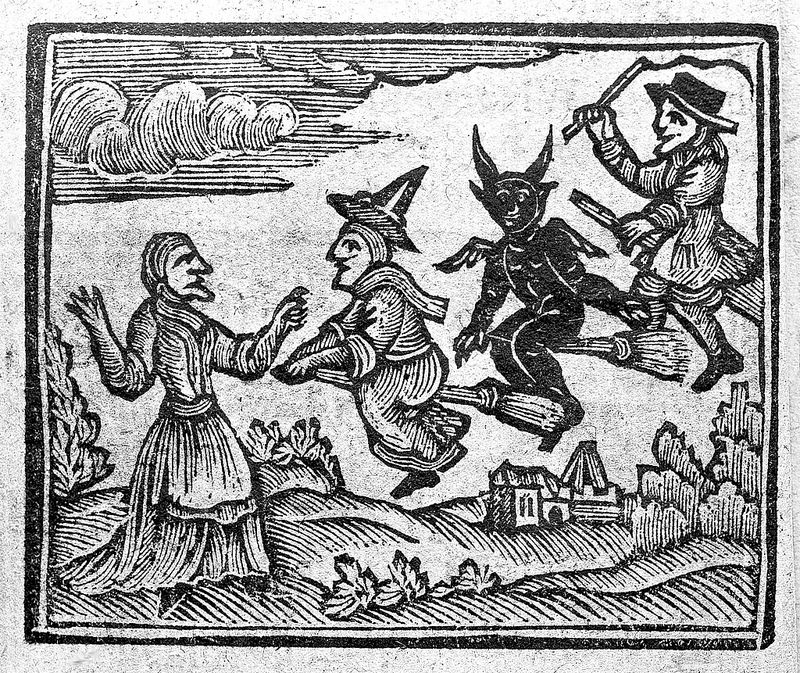 In folk traditions and witchcraft, the magic wand took on a more personal and intimate role. Witches and folk practitioners often created their wands from natural materials like wood, bone, and stone, believing these elements connected them more closely to the natural world and its energies. The wand became a tool for casting spells, healing, and protection, deeply ingrained in the practitioner's spiritual journey.
In folk traditions and witchcraft, the magic wand took on a more personal and intimate role. Witches and folk practitioners often created their wands from natural materials like wood, bone, and stone, believing these elements connected them more closely to the natural world and its energies. The wand became a tool for casting spells, healing, and protection, deeply ingrained in the practitioner's spiritual journey.
Throughout history, the magic wand has been a symbol of power, wisdom, and the bridging of worlds. Its evolution from ancient symbols of authority to personalized tools of modern magical practice reflects humanity's enduring fascination with the mystical and the unknown. As a conduit for the wielder's will and a bridge to the unseen, the magic wand remains a timeless testament to the human quest for understanding and mastery over the mysteries of the universe.
Cultural Significance Across the World
The magic wand, a universal symbol in the tapestry of magical traditions, manifests distinctively across various cultures. Each tradition weaves its narrative, embedding unique spiritual and symbolic meanings into these mystical tools.
Western Occult Traditions
In Western occult practices, such as Wicca and Hermeticism, the wand is often associated with the element of air or fire, depending on the tradition. It serves as a conduit for the will of the practitioner, directing energy and intention during rituals. Wiccan traditions, for instance, utilize the wand for invoking deities, casting circles, and channeling natural energies. The wand’s design in these traditions is often guided by astrological alignments and personal affinities, making each wand a reflection of its owner's spiritual journey.
Eastern Practices
Turning to the East, in traditions like Taoism, wands, and staffs are revered as instruments of wisdom and balance. The 'Ruyi,' a ceremonial scepter in Chinese culture, represents authority and good fortune. Taoist priests use wooden swords or wands in rituals to direct spiritual energy and ward off negative influences, emphasizing harmony between the physical and spiritual realms.
Indigenous and Shamanic Traditions
In indigenous and shamanic cultures, wands and staffs are often seen as bridges between the physical world and the spirit realm. Shamans use wands crafted from native woods and adorned with symbols and objects significant to their culture and spiritual practice. These wands are tools for healing, divination, and communicating with spirit guides, deeply rooted in the shaman’s relationship with the natural world.
Ancient Egypt
In Ancient Egypt, the wand was a symbol of divine authority and protection. Pharaohs and high priests used wands or staffs, often made from precious materials like gold and adorned with sacred symbols. These wands were not merely ceremonial; they were believed to wield the power to perform miracles, protect against evil forces, and communicate with the gods. The staff of Osiris, one of the most powerful gods in Egyptian mythology, is a prime example, symbolizing both his authority over the afterlife and his role as a judge of the dead.
Each of these cultural perspectives on magic wands reveals a rich tapestry of belief and practice. From tools of ritual and ceremony in Western occultism to symbols of balance and harmony in Eastern traditions, and from sacred connections in indigenous cultures to symbols of divine power in Ancient Egypt, magic wands have been, and continue to be, powerful and mystical instruments across the world.
Design and Composition of Magic Wands
The materials chosen for crafting a magic wand are not merely functional; they carry deep symbolic and metaphysical significance, influencing their use in various magical practices. Each material resonates with specific energies and purposes, making the wand a powerful tool in the hands of a practitioner. Let's delve into the significance of these materials in magical practices:
- Oak Wood - Oak, revered for its strength and endurance, is commonly used in Western traditions like Wicca and Druidry. A wand made from oak is believed to provide protection and strength to the practitioner. It's often employed in rituals for grounding, stability, and invoking the energies of the earth.
- Willow Wood - Willow wood, associated with flexibility and intuition, has a strong connection to lunar energies and water elements. In Celtic and Wiccan traditions, willow wands are used for healing, emotion-related spells, and enhancing psychic abilities, as well as rituals involving the moon and its cycles.
- Ebony Wood - Ebony, known for its protective and powerful qualities, is used in both African magical practices and Western occult traditions. An ebony wand is often chosen for its ability to balance energies, protect against negative forces, and enhance the potency of spells and rituals.
- Ivory - While its use is now controversial and largely discouraged due to ethical considerations, ivory historically symbolized purity and luxury. In ceremonial magic, particularly in African and Asian cultures, ivory wands were used to represent a connection to divine energy and were often reserved for high-ranking practitioners.
- Bamboo - In Eastern traditions like Taoism and Buddhism, bamboo symbolizes flexibility, spiritual growth, and resilience. Bamboo wands are used in practices that focus on spiritual advancement, energy channeling, and as a tool in meditative and healing rituals.
- Crystal Quartz - Crystal quartz, a universal tool in various magical traditions, is prized for its clarity and energy amplification properties. Practitioners across cultures use quartz in their wands for enhancing spiritual development, amplifying the energies of other elements in the wand, and for clarity in divination practices.
- Copper - Copper is known for its conductivity and is often used in wands for balancing and directing energy flow. In both Western and Middle Eastern occult practices, copper wands are employed in energy work, healing, and in rituals that require a balance of energies.
- Gold - Gold, associated with purity and power, is a common element in high ceremonial magic globally. Gold wands are used to represent the connection to higher realms, enhance personal power, and in rituals requiring the invocation of powerful deities or spirits.
- Silver - In traditions such as Wiccan and Hermetic practices, silver is connected to lunar energies and psychic abilities. Silver wands are used in rituals involving the moon, and psychic development, and for practices that require purity and protection.
- Rowan Wood - In Northern European (Celtic) traditions, rowan wood is valued for its protective and inspirational qualities. Wands made of rowan are often used for enhancing psychic powers, for protection against enchantment, and in rituals that require inspiration from spiritual realms.
Each material brings its unique qualities to the wand, making it a deeply personal and powerful tool in various magical practices. The choice of material can significantly influence the effectiveness and purpose of the wand, aligning it with the practitioner’s intentions and the specific energies they wish to channel.
Enhancing Wand Energy with Crystals, Runes, and Symbols
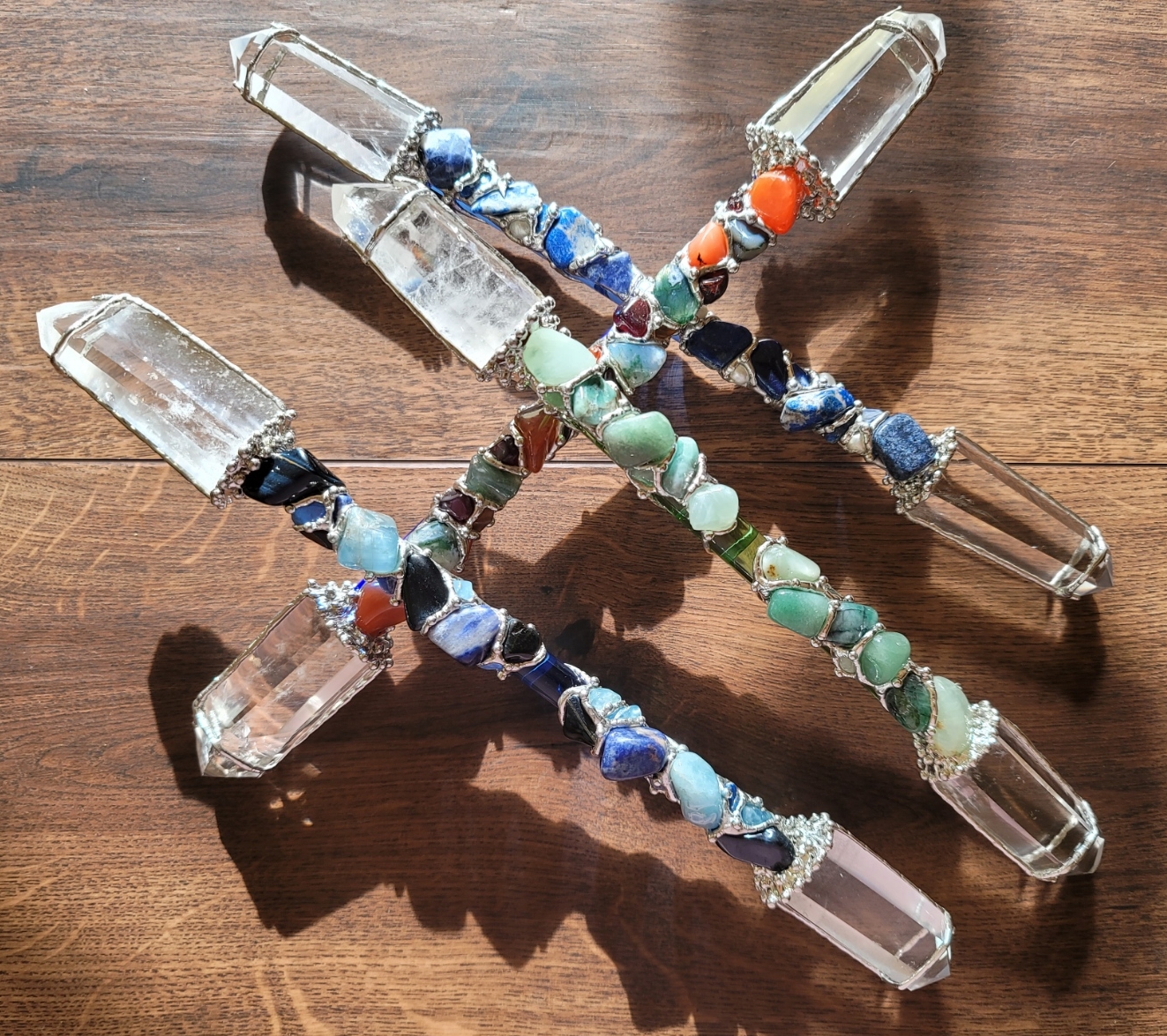 The art of wand embellishment with crystals, runes, and symbols is a practice steeped in ancient wisdom and modern creativity. These additions are not just aesthetic; they serve to amplify the wand's energy, align it with specific intentions, and deepen its connection to various mystical traditions.
The art of wand embellishment with crystals, runes, and symbols is a practice steeped in ancient wisdom and modern creativity. These additions are not just aesthetic; they serve to amplify the wand's energy, align it with specific intentions, and deepen its connection to various mystical traditions.
- Crystals - Incorporating crystals into a wand can significantly enhance its properties. Each crystal has its own unique vibration and metaphysical attributes, which can be harnessed to augment the wand's purpose. For instance, adding a rose quartz crystal may be aimed at fostering love and emotional healing, while a clear quartz tip could be used for general energy amplification. The placement of these crystals is also significant; for example, a crystal at the tip of the wand can focus and direct energy more precisely.
- Runes - Carving runes onto a wand imbues it with the power of ancient alphabets, each symbol holding specific meanings and energies. Runes stem from various cultures, including Norse and Germanic traditions, where they were used for divination and magic. Embedding runes in a wand can tailor its energy for specific purposes like protection (Algiz rune), success (Sowilo rune), or transformation (Hagalaz rune). The choice and arrangement of runes can be customized to the practitioner’s intention, making the wand a highly personalized magical tool.
- Symbols - Symbols from various spiritual paths can also be incorporated into wand design. These might include astrological symbols to align the wand with celestial energies, alchemical symbols representing transformation and creation, or sacred geometry patterns like the Flower of Life for harmony and balance. Symbols can be carved, painted, or attached to the wand, each adding a layer of meaning and power. For example, a wand adorned with the pentacle (a symbol of protection and the elements in Wicca) can strengthen the practitioner's connection to Earth-based magic.
Incorporating these elements into a magic wand turns it into a multi-dimensional tool, resonating with a symphony of energies and intentions. The customization of a wand with crystals, runes, and symbols not only enhances its effectiveness in magical practice but also deepens the personal connection between the wand and its wielder. This practice reflects the beauty of magic as an art form, where ancient symbols and modern intentions intertwine to create powerful instruments of transformation and manifestation.
Rituals and Practices Involving Magic Wands
The use of magic wands in rituals and practices is as varied as the cultures and traditions from which they originate. These practices highlight the wand's role as a conduit for the practitioner's will and a tool for manifesting intentions. Here, we explore how magic wands are employed in different magical and spiritual rituals.
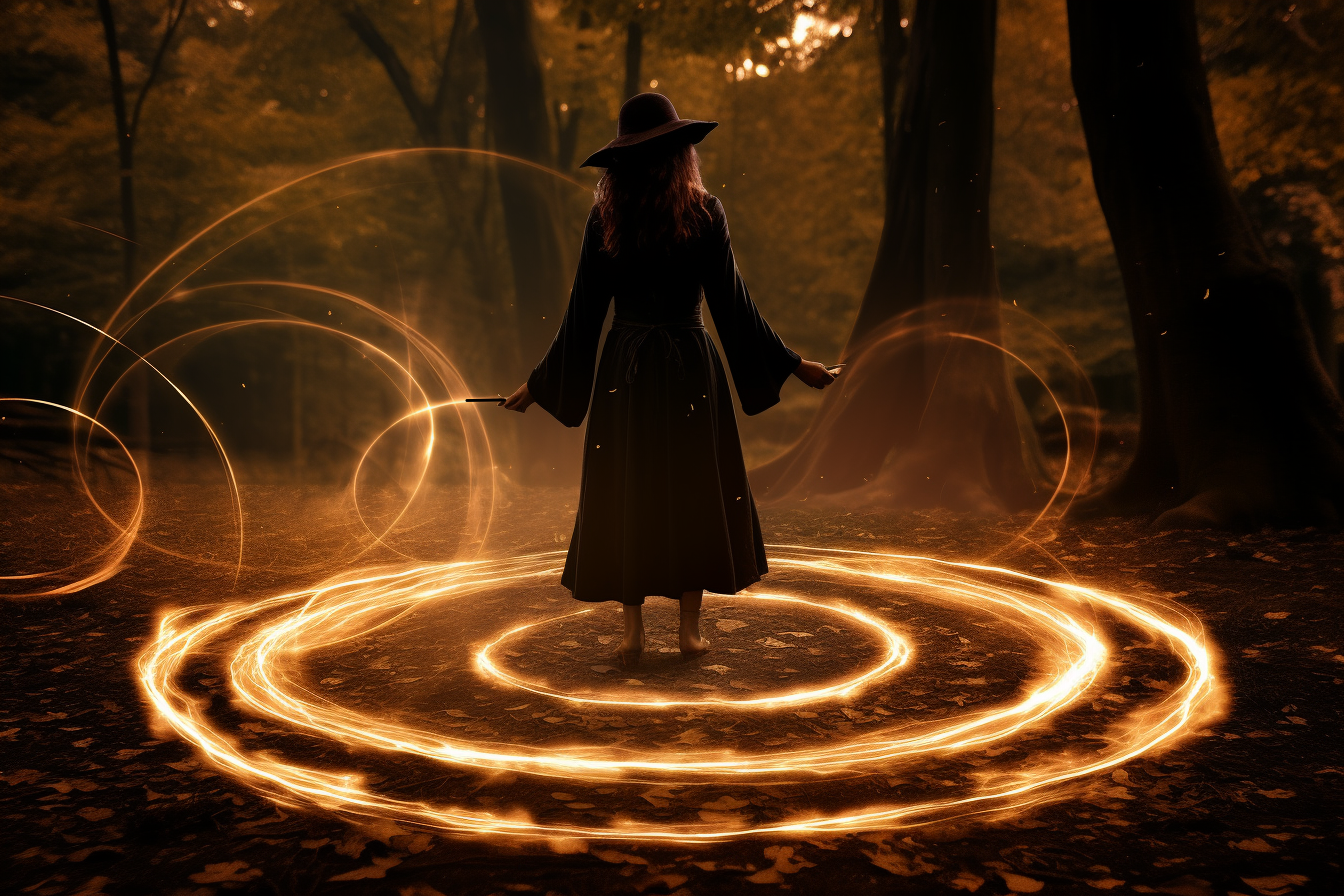
Casting and Directing Energy
One of the primary uses of a magic wand is to cast and direct energy. In many traditions, the wand serves as an extension of the practitioner's hand, channeling and focusing their energy and intention. During spellcasting, the wand is used to draw symbols or circles in the air, helping to define the magical space and direct the spell's energy to its intended purpose.
Invoking and Banishing
Wands are often used in the practice of invoking (calling in) or banishing (sending away) energies, deities, or spirits. In ceremonial magic, the wand can be used to trace symbols or sigils associated with specific entities, facilitating communication and interaction with them. The act of pointing the wand towards or away from something symbolizes the practitioner's command over these energies.
Blessing and Consecrating
In many spiritual practices, wands are used for blessing or consecrating objects, spaces, or individuals. By channeling positive energy through the wand, practitioners can imbue objects with specific intentions or purify a space from negative influences. The wand, thus, becomes a tool for sanctification and protection.
Divination
Some traditions use wands in divination practices. The wand can be employed to dowse for energy fields, seek out spiritual entities, or aid in scrying (foreseeing the future or the unknown). The material and symbols on the wand can enhance its connection to the intuitive processes involved in divination.
Healing
In healing rituals, wands are used to direct healing energy to specific parts of the body or to the aura. Healers may use wands made from materials like crystal or wood believed to possess healing properties, amplifying the healing energy and aiding in the restoration of physical, emotional, or spiritual balance.
Ritual Dances and Performances
In some cultures, wands are used as integral parts of ritual dances and performances. They can be seen as symbolic representations of power, fertility, or the connection between the physical and spiritual worlds. The movements and patterns created with the wand during these rituals add a layer of symbolic meaning to the performance.
Each of these practices highlights the versatility and significance of the magic wand in various spiritual and magical contexts. Whether used for casting spells, invoking deities, or healing, the wand remains a potent and revered instrument in the hands of those who understand and respect its power. Through these practices, the wand transcends its physical form, becoming a bridge between the visible and the invisible, the mundane and the divine.
Symbolism and Mythology of Magic Wands
The symbolism of magic wands is deeply entrenched in the folklore and mythology of various cultures. These stories and myths not only entertain but also impart profound insights into the values and beliefs of the societies that created them. Here, we explore two such myths that highlight the symbolic power and mystique of magic wands.
The Wand of Hermes/Mercury (Greek and Roman Mythology)
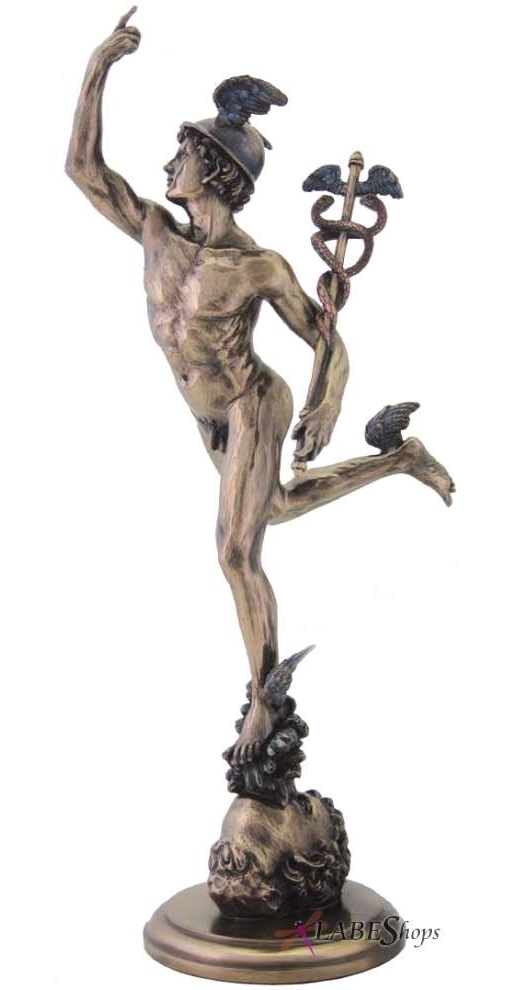 In Greek mythology, Hermes, the messenger of the gods, was bestowed with a special wand called the Caduceus. This wand, often depicted as a staff entwined with two serpents and topped with wings, symbolized commerce, eloquence, and negotiation. According to myth, Hermes used the Caduceus to bring peace, stop conflicts, and guide the souls of the dead to the afterlife. In Roman mythology, Mercury, the counterpart of Hermes, carried a similar wand, reinforcing the symbolism of guidance, eloquence, and transition between worlds. The Caduceus, over time, has become a symbol of healing and medicine, although this association is a mix-up with the Rod of Asclepius, which has only one snake and no wings.
In Greek mythology, Hermes, the messenger of the gods, was bestowed with a special wand called the Caduceus. This wand, often depicted as a staff entwined with two serpents and topped with wings, symbolized commerce, eloquence, and negotiation. According to myth, Hermes used the Caduceus to bring peace, stop conflicts, and guide the souls of the dead to the afterlife. In Roman mythology, Mercury, the counterpart of Hermes, carried a similar wand, reinforcing the symbolism of guidance, eloquence, and transition between worlds. The Caduceus, over time, has become a symbol of healing and medicine, although this association is a mix-up with the Rod of Asclepius, which has only one snake and no wings.
The Wand of Circe (Greek Mythology)
Another powerful mythological figure associated with a magic wand is Circe, a goddess and enchantress in Greek mythology. Circe's wand was infamous for its transformative powers, best exemplified in the Odyssey by Homer. When Odysseus's crew landed on her island, Circe used her wand to turn them into pigs, showcasing the wand's ability to alter form and reality. This story not only highlights the wand as a tool of transformation but also as a symbol of the wielder's wisdom, knowledge, and mastery over magical arts. Circe's wand reminds us of the fine line between benevolence and malevolence in the use of power.
These myths illustrate the magic wand's role as more than just a tool; it is a powerful symbol of transformation, guidance, and authority. In Hermes/Mercury's case, the wand represents diplomacy and transition, while Circe's wand symbolizes the potent, transformative power of magic. The legends surrounding these wands underscore the belief in the supernatural and the respect for those who could wield such powerful objects.
In both cases, the wand is not merely an instrument of power but also a representation of the wielder's character and journey. It embodies the wisdom, challenges, and responsibilities that come with great power. Through these myths, the magic wand transcends its physical form, becoming a key that unlocks the mysteries of the universe and the depths of human imagination.
Contemporary Usage and Popularity of Magic Wands
In modern times, the fascination with magic wands has not only persisted but has also flourished, finding new expressions and interpretations in contemporary culture.
Magic Wands in Popular Media
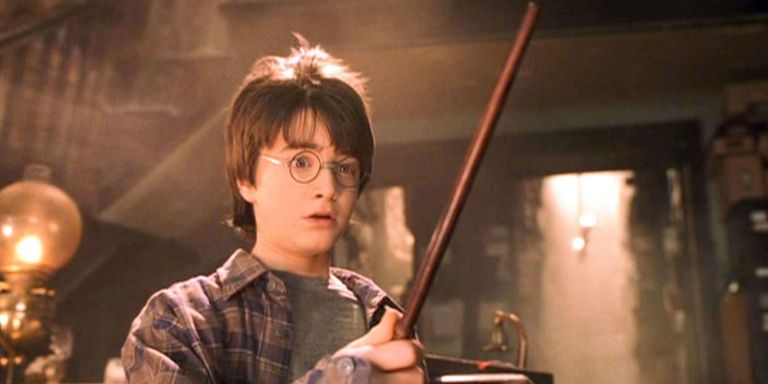 One of the most significant influences on the contemporary perception of magic wands comes from their depiction in literature and film, particularly in fantasy genres. J.K. Rowling's "Harry Potter" series, for instance, has played a pivotal role in popularizing the concept of magic wands to new generations. In this universe, wands are deeply personal tools that choose their wizard and are central to a wizard's identity and abilities. This portrayal has sparked a renewed interest in the lore of magic wands, leading to a surge in wand collections, replicas, and a deeper exploration into the magical traditions behind them.
One of the most significant influences on the contemporary perception of magic wands comes from their depiction in literature and film, particularly in fantasy genres. J.K. Rowling's "Harry Potter" series, for instance, has played a pivotal role in popularizing the concept of magic wands to new generations. In this universe, wands are deeply personal tools that choose their wizard and are central to a wizard's identity and abilities. This portrayal has sparked a renewed interest in the lore of magic wands, leading to a surge in wand collections, replicas, and a deeper exploration into the magical traditions behind them.
Resurgence in Spiritual and Occult Practices
There has also been a resurgence of interest in spiritual and occult practices where magic wands regain their traditional significance. In contemporary witchcraft, Wicca, and various neopagan paths, practitioners often craft or acquire wands that align with their energies and the specific nature of their magical work. The wand remains a tool for directing energy, casting circles, and performing rituals, rooted in ancient traditions but adapted to modern contexts.
Artistic and Craftsmanship Revival
The rise in popularity of magic wands has led to a revival in the art of wand-making. Artisans and craftspeople create wands using traditional materials like wood, crystal, and metals, often incorporating modern design elements and personal touches. This craftsmanship not only honors the historical significance of the wand but also allows for personal expression, with many practitioners and enthusiasts seeking custom-made wands that reflect their individuality and spiritual path.
Educational and Psychological Perspectives
Educators and psychologists have observed the role of magic wands in imaginative play and its benefits in child development. Wands can be powerful tools in play therapy, helping children express themselves, explore their creativity, and navigate their emotions. The symbolism of the wand also extends to self-empowerment and personal growth, as it represents the ability to manifest one's desires and intentions.
The enduring popularity and relevance of magic wands in contemporary culture underscore their symbolic power and the human fascination with the mystical. From fantasy entertainment to spiritual practice, and from artistic expression to psychological growth, magic wands continue to captivate and inspire, bridging the ancient and the modern, the magical and the mundane.
The Wand's Enduring Enchantment
As we draw our exploration of magic wands across cultures to a close, it becomes evident that these mystical tools are far more than mere relics of a bygone era or fanciful elements of fictional narratives. Magic wands, with their rich and varied history, have been a constant symbol of power, transformation, and the human connection to the mystical realms of the universe.
From the ancient staffs of Egyptian pharaohs to the ornate wands in modern-day spiritual practices, these instruments have consistently played a pivotal role in shaping human interactions with the unseen forces of the world. They remind us of our enduring quest to understand and influence the mysteries that surround us. In every culture and era, the wand has served as a bridge between the known and the unknown, the material and the spiritual, the mundane and the magical.
In contemporary society, the magic wand continues to wield its influence, not just in the realms of spirituality and occult practices, but also as a symbol of personal empowerment and creative expression. The resurgence of interest in wand lore and craftsmanship speaks to a deeper human need for connection with our ancient roots and a desire to harness our innate power.
It becomes clear that the magic wand is more than an object; it is a testament to the human spirit's unending search for knowledge, power, and understanding. It stands as a beacon of hope and a reminder that within each of us lies the potential to tap into the vast, mysterious energies of the universe. The magic wand, in all its forms, invites us to embark on this journey of discovery, urging us to explore the depths of our inner magic.
Frequently Asked Questions (FAQs)
What is the historical significance of magic wands?
The historical significance of magic wands are symbols of power and spiritual authority since ancient times, evolving from ancient staffs of rulers and priests to tools in modern magical practices.
How are magic wands used in different cultures?
Magic wands are used in rituals, as symbols of authority, for divination, and in healing practices, each culture imbuing them with unique meanings and uses.
Do I have to make my wand?
No, you do not have to make your own wand. While some magickal traditions include a lesson in crafting a wand, most allow the use of store-bought wands as well.
Can anyone use a magic wand?
Yes, anyone interested in magical or spiritual practices can use a wand. However, the effectiveness of a wand is often believed to depend on the connection and intention of the user.
What materials are traditionally used to make magic wands?
Traditional materials include different types of wood (like oak, willow, and ebony), crystals (like quartz), and metals (like copper and silver). Each material is chosen for its unique metaphysical properties.
What is the significance of adding crystals or runes to a wand?
Adding crystals or runes to a wand is believed to enhance its energy and align it with specific intentions or powers, making the wand a more personalized and potent tool in magical practices.
Author: Lori Anne Brown
Lori Anne Brown is a life-long learner and spiritual seeker long interested in natural healing, crystals, and metaphysics. Spiritually Lori is an Omnist believing all religions and spiritualities contain truth and wisdom with a personal practice that contains elements of Wicca, Buddhism, Egyptian Kemetism, and more. She is a certified Reiki Master and Crystal Healer, an artist, sci-fi geek, and gamer, as well as the owner of this shop and Scifispace.com.
She currently resides in Central Florida with multiple fur babies.
Lori is all over social media so find her on Facebook, Instagram, Twitter, and Youtube. She has a personal blog at LoriAnneBrown.com
Related articles:
What is a Magic Amulet or Talisman? How do I use it?
- Category:
- ▸ Magical Basics
When you are considering something to empower (or enchant if you want to use a more magical sounding term), consider what you want it to do...and look at the design to see what it says to you. Then learn how to charge or empower it for that purpose.
|
How to Empower your Amulet or Talisman
- Category:
- ▸ Magical Basics
A few posts ago, I talked about how an amulet or talisman was just a hunk of metal - unless you empower it. This time, I'll expand a little more on it and tell you how to empower it for your intent.
|
Creating a Prosperity Altar
- Category:
- ▸ Magical Basics
Setting up a prosperity altar can be a great way to attract abundance into your life and to be grateful for all you have.
|
Unlocking the Magic of Altars: A Journey into Sacred Spaces
- Category:
- ▸ Magical Basics
You find yourself in the heart of your home, in a corner adorned with objects that speak to your soul. This is your personal altar, a sacred space that serves as a bridge between the every day and the...
|
